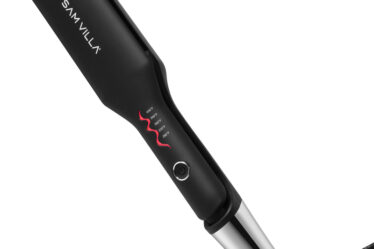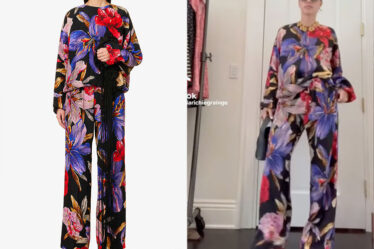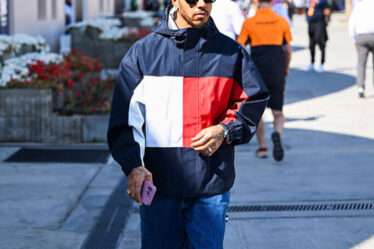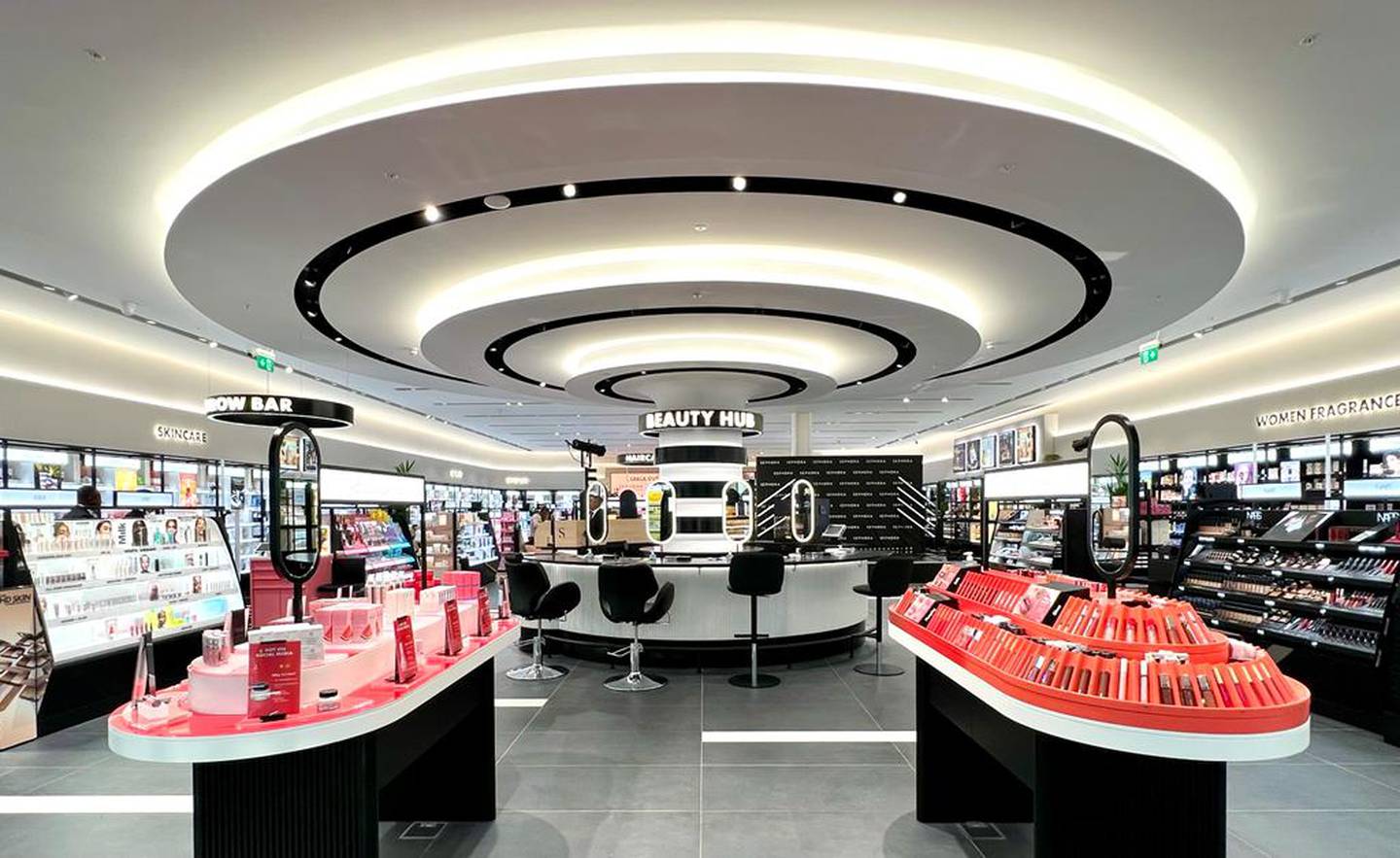
LONDON — British beauty lovers queued for hours on Wednesday to experience something that would be utterly mundane in almost any other major city: set foot inside a Sephora.
The store, housed in Westfield, a giant shopping centre in West London’s Shepherd’s Bush neighbourhood, is the LVMH-owned beauty company’s first UK location since pulling out of the country almost two decades ago. The retailer has been hyping its return for months, and had launched digital sales there in October.
While waiting to enter the store, visitors were kept entertained with performances from pop band The Sugababes and a Sephora squad of professional dancers. Brand reps handed out coffees and on-brand black and white lollipops during the lengthy wait. Once inside, they were treated to makeovers, facials and blowouts, while browsing Sephora’s “Hot on Social Media” assortments and its well-known “The Next Big Thing” edit. It was the first time British shoppers were able to shop from Sephora exclusive lines like Gwen Stefani’s GXVE, One/Size by Patrick Starrr and Skinfix in person in the UK.
Much is riding on the store opening: after a bumpy online launch six months ago, Sephora needs to work to reignite buzz and create excitement around its brand, especially in such a dense and competitive market. Read on for The Business of Beauty’s cheat sheet for everything you need to know.
Simply put, the UK beauty sector is a $13 billion opportunity for Sephora, according to research firm Euromonitor International — and one of the last major markets where it wasn’t already operating.
It’s not the first time the retailer has tried to crack the UK, however. Sephora first arrived in 2000 with a handful of stores in mostly suburban mall locations, such as Bluewater in Kent and Brent Cross in Hendon, North London. It exited just four years later.
This time around, Sephora has taken a digital-first approach. It acquired Feelunique, a British online retailer, in 2021. A rebranded website relaunched in October, alongside the announcement of new brick-and-mortar Sephora stores.
A lot rides on Sephora nailing the in-store experience.
The digital launch suffered a number of teething pains. When Sephora celebrated its re-entry to the UK, it did so with a large-scale pop-up event in Marylebone the week of its launch. There, members of the public could come and discover the many brands Sephora stocked online. But technical glitches and inventory issues plagued Sephora’s UK website; frustrated users complained of blurry images, dead links and stock shortages.
“It was more of a polite hum, rather than a buzz, when they launched,” said Jo Jones, PR and brand strategy expert. “I was expecting it to be bigger and bolder.”
The absence of stores was also a contributing factor. With the acquisition of Feelunique, the retailer instantly had access to millions of British beauty consumers and their data, including purchasing habits — that gave Sephora a head start on its retail rollout. But Sephora is ultimately a store-led brand, known for its high-touch, experiential environment. Many British beauty shoppers were already familiar with the retailer’s stores after encountering them while on holiday in the US or France, said Wizz Selvey, founder of brand and retail strategy firm Wizz & Co.
“It’s very much top of mind as a shopping experience,” she said. “Without a store, it was quite difficult for the customer to perceive what [the experience] was going to be like.”

The new store’s location is no Times Square or Champs-Élysées. If the retailer wanted to make a huge splash, a giant store in central London would be much more conspicuous. High traffic shopping destinations like Oxford Circus and Regent Street are a major draw for many global brand flagships like Coach and Calvin Klein, and a stone’s throw away from department stores like Liberty and Selfridges; Covent Garden, meanwhile, has developed a reputation as a beauty shopping hub, with brands from Chanel and Tom Ford to Deciem and Glossier opening standalone stores.
Instead Sephora appears to be approaching brick-and-mortar retail with caution. For its first store, Sephora has opted for a 6,000 square foot space in one of the largest shopping malls in Europe. While far from the hubbub of the city centre, Westfield still attracts thousands of shoppers daily.
“It felt right as a first step,” said Sarah Boyd, managing director of Sephora’s UK division. “We felt that this was a safe option for us to take to make sure that we were guaranteed success.”
The strategy is to use this new Westfield store as a test case to help shape its broader retail strategy in the UK going forward, said Boyd. The Sephora team hasn’t yet decided how many locations it plans to open, or where, she said, although a presence outside of London is on the agenda.
“This first store will be a really important data point for us to look at how we reimagine our future in the UK,” Boyd said. “It’ll be a very, very important barometer.”
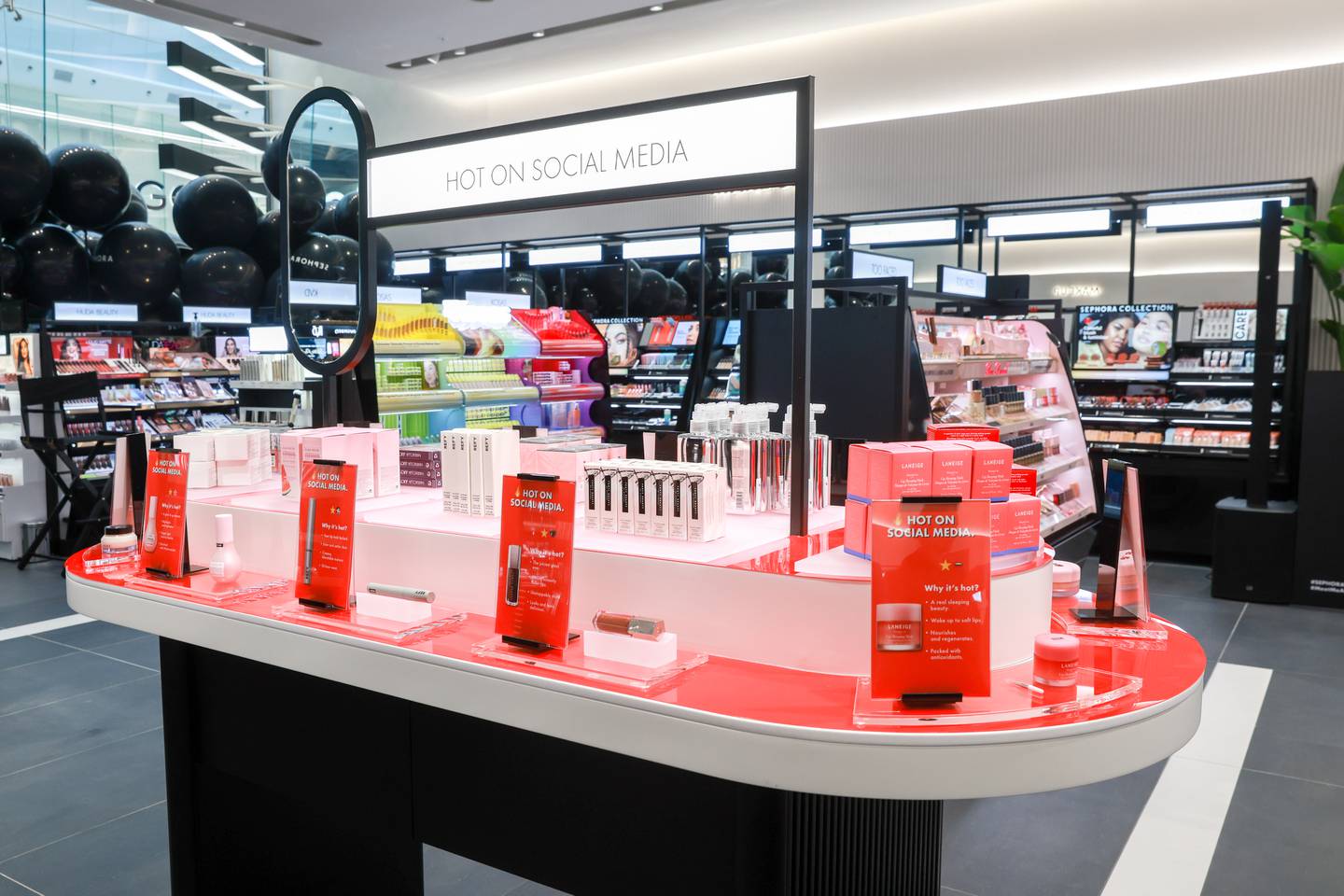
Sephora is starting from a strong position, thanks to its high brand awareness and reputation as a beauty authority.
Nevertheless, the British beauty market is fiercely competitive with a highly fragmented distribution network. British shoppers have a plethora of options: from drugstore brand Boots to specialty retailer Space NK and luxury department stores like Selfridges, Harrods, Liberty and Harvey Nichols. That’s on top of beauty e-tailers like Cult Beauty, known for its edit of in-demand indie brands, and Beautybay, which caters to a younger, social-media savvy audience. Look Fantastic, meanwhile, serves a wide clientele with its broad assortment at competitive prices.
However, the demise of British department stores chains like Debenhams and House of Fraser during the pandemic left an opening in the market, particularly in key regional cities like Manchester, Newcastle and Bristol. Sephora has an opportunity to fill that void in the market, especially as post-pandemic, shoppers are excited to go back to stores. After all, brick-and-mortar is what Sephora does best.
Sephora has to also work hard to keep feeding British beauty shoppers buzzy brands that can only be found in their stores and on their website. While the retailer has brought new brands to the UK — including Ilia Beauty, Makeup by Mario and Gwen Stefani’s brand GXVE, which have all been strategically positioned at the front of the new store — many other hot names it launched exclusively in the US already have UK distribution partners. Fenty Beauty, for example, is available at Boots and Harvey Nichols, while Selena Gomez’s Rare Beauty is sold at Space NK.
In the meantime, Sephora is betting big on experiences to draw shoppers into the store. It has strategically placed its “Beauty Hub” — a makeover space offering facials, makeup tutorials and other consultations and services — right at the center of the Westfield shop. Elsewhere, visitors can get eyebrow treatments or have their hair styled, or even personalise bottles of perfume with special engraving.
“It’s about premium, experiential beauty,” Boyd said. “[We’ve created] a door that’s open for absolutely everybody to come in, and to play and experience, and figure out how they can reimagine beauty for themselves.”
LVMH is part of a group of investors who, together, hold a minority interest in The Business of Fashion. All investors have signed shareholder’s documentation guaranteeing BoF’s complete editorial independence.

